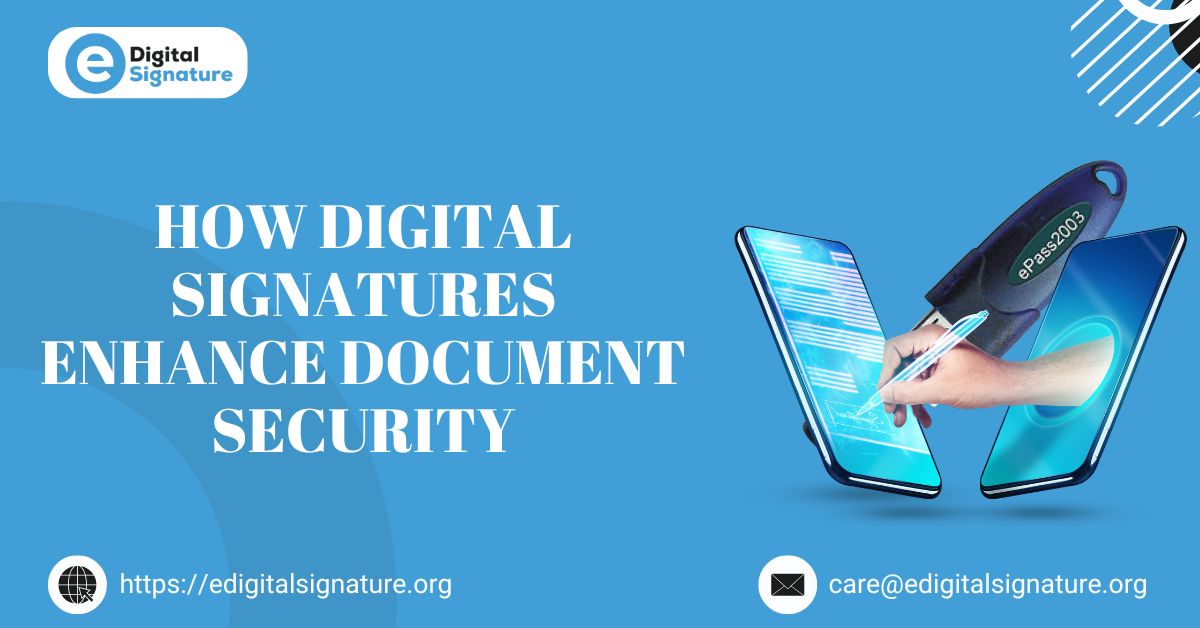In an increasingly digital world, the integrity and security of documents are paramount. Digital signatures have emerged as a critical technology for ensuring that documents remain secure from unauthorized access and tampering. This article delves into how digital signatures enhance document security, exploring their mechanisms, benefits, and implications in various fields.
Understanding Digital Signatures
A digital signature is a cryptographic technique that allows the signer of a document to verify their identity and ensure the document’s integrity. Unlike handwritten signatures, digital signatures rely on mathematical algorithms to provide a higher level of security.
When a document is signed digitally, a unique digital fingerprint (also known as a hash) of the document is created. This hash is then encrypted with the signer’s private key. The resulting encrypted hash, along with the hashing algorithm, constitutes the digital signature. This process serves two primary purposes: authentication and integrity.
- Authentication:
Digital signatures authenticate the identity of the signer. When a recipient receives a digitally signed document, they can use the signer’s public key to decrypt the hash. If the decrypted hash matches the hash of the received document, the recipient can confirm that the document was indeed signed by the claimed sender.
- Integrity:
Digital signatures ensure that the document has not been altered after signing. If any changes are made to the document post-signing, the hash will no longer match, indicating potential tampering.
Mechanisms of Digital Signatures
Digital signatures utilize public key infrastructure (PKI), a framework that manages digital keys and certificates. The PKI consists of three main components:
- Public and Private Keys:
Each signer has a pair of keys: a private key, known only to the signer, and a public key, which is shared with anyone who needs to verify the signature. The private key is used to create the digital signature, while the public key is used for verification.
- Digital Certificates:
A digital certificate is an electronic document that associates a public key with the identity of the signer. Issued by a trusted certificate authority (CA), these certificates confirm the authenticity of the public key, enabling recipients to trust the signatures.
- Hashing Algorithms:
Digital signatures rely on cryptographic hashing algorithms (e.g., SHA-256) to create a unique representation of the document. This ensures that even the slightest change in the document results in a significantly different hash.
Benefits of Digital Signatures for Document Security
- Enhanced Security:
Digital signatures provide robust security features that protect against forgery and tampering. The combination of encryption and hashing ensures that only the legitimate signer can create a valid signature, while any alteration to the document can be easily detected.
- Non-Repudiation:
One of the key advantages of digital signatures is non-repudiation, which means that the signer cannot deny having signed the document. This is crucial in legal and business contexts, where disputes may arise regarding the authenticity of a signature.
- Streamlined Processes:
Digital signatures facilitate faster and more efficient workflows. Traditional signature processes often involve printing, signing, scanning, and emailing documents. Digital signatures eliminate these cumbersome steps, allowing for immediate signing and verification, which can significantly speed up business transactions.
- Cost-Effectiveness:
By reducing the need for paper documents, printing, and postage, digital signatures can lower operational costs. Organizations can save money on administrative tasks while contributing to sustainability efforts by reducing paper waste.
- Global Acceptance:
Digital signatures are recognized globally and comply with various legal frameworks, including the eIDAS Regulation in the European Union and the ESIGN Act and UETA in the United States. This widespread acceptance enables seamless cross-border transactions.
Process to apply for Digital Signature
Step 1: Visit the DSC Website
Go to edigitalsignature.org.
Step 2: Fill in Your Details
- Select User Type: Choose individual, organization, etc.
- Class Type: Select Class 3.
- Certificate Type: Specify if it’s for signing only or both signing and encryption.
- Validity: Choose the validity period for the DSC.
- Applicant Name and Contact: Enter your full name, phone number, and email.
- Residential Address: Fill in your complete address (including pincode, city, and state).
- Declaration: Read and accept the terms of service.
- Submit: Click the submit button to continue.
Step 3: Token Selection
- If you have a token, select “No.” Your DSC will be downloaded on the old token.
- If you don’t have a token, select “Yes.”
Step 4: Make Payment
Provide payment details for the DSC fee. You can pay via net banking, credit/debit card, or UPI.
Step 5: Issue the DSC
After submitting your application and payment, the competent authority will review your application and issue the DSC electronically. You’ll receive an encrypted Pen Drive with your DSC by post.
Note:
Ensure all information is accurate to avoid delays in processing your application.
Challenges and Considerations
Despite their many advantages, the implementation of digital signatures is not without challenges:
- Technical Expertise:
Organizations may require technical expertise to implement and manage digital signature solutions effectively. This can involve training staff and ensuring that the necessary infrastructure is in place.
- Legal and Regulatory Compliance:
While digital signatures are generally recognized legally, organizations must ensure that their use complies with relevant laws and regulations in their jurisdiction. This may involve working with legal experts to understand the specific requirements.
- Trust in Certificate Authorities:
The security of digital signatures relies on the trustworthiness of certificate authorities (CAs). Organizations must choose reputable CAs to ensure the validity of the digital certificates used for signing.
- Evolving Technology:
As technology advances, new threats and vulnerabilities may emerge. Organizations must stay informed about the latest developments in digital signature technology and adapt their practices accordingly.
Suggested Read – Class 3 Digital Signature Certificate For eTender
Conclusion
Digital signatures play a vital role in enhancing document security in today’s digital landscape. By providing authentication, integrity, and non-repudiation, they help organizations streamline processes, reduce costs, and ensure compliance with legal standards. As digital transactions continue to grow, the importance of digital signatures in protecting sensitive information will only increase.
Incorporating digital signatures into document management practices not only enhances security but also builds trust among stakeholders. As more businesses and institutions adopt this technology, it is essential to address the challenges associated with implementation and ensure that digital signatures remain a reliable and effective solution for safeguarding documents in an ever-evolving digital world.




